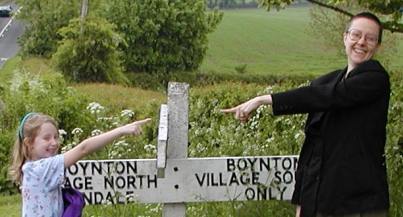They started in Boynton, from whence came the name. But from
Boynton they went north and south; they also went east and west. Over six
centuries the Boyntons covered much of Yorkshire and, from time to time, got
up into Durham, Northumberland, and down into Lincolnshire.
We were on the trail of Boyntons, and we had two weeks in May
and one week in June to track them. This is the story of the trip. It is a
story in three elements. One, it is about the places. Two, it is about how
Boyntons were related to those places. And three, it is about the trip: how
we got from one place to the next, what we saw, what we ate, where we stayed.
In this element there is an emphasis on Anna, the youngest tracker, because
the original audience for these stories was people who cared for her very
much.
If you like your history in the form of stories about travel
you may like learning about Boyntons and their places via these 18 stories.
Click on the images to go to the individual stories.
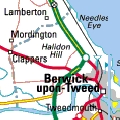 |
1. Hopping on airplanes we headed for Glasgow and then to
our first stop, Berwick Upon Tweed. The castle at Berwick Upon Tweed was
particularly important to two Boyntons. They lost their heads there. |
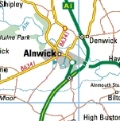 |
2. The next day we got a much better view of the castle.
Then it was off to Lindesfarne -- the island monastery. No Boyntons there
that we know about. It was, then, a short drive to Alnwick castle, which
was and is the home of the Percys. Both Robert and Thomas had visited
Alnwick. We finished the drive to Durham that evening. |
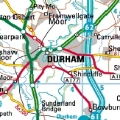 |
3. Sunday and it was our first day in Durham. We attended
a service in the cathedral, which was beautiful even if not very well
attended. Then we had to take care of electronics. |
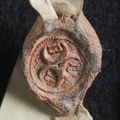 |
4. Research was why we were in Durham. The Priory archive
has a substantial collection of records that involved Boyntons. Thomas
had been sheriff and escheator of Durham. Christopher had been a member
of many of the Bishop's commissions. They also had a substantial collection
of seals. So we were intent on getting pictures of Boynton seals. |
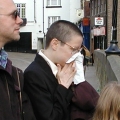 |
5. Three weeks is a long time, and illness is a reasonably
high probability when four people hang out together for three weeks. Anne
was sick with a sinus infection. It was no fun, and it would not go away
for a while. |
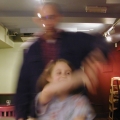 |
6. England does not have the best culinary reputation around.
So, we were surprised to find Caffe Nero where you could get excellent
espresso, and a restaurant that served tall food in Durham. The whirling
dervishes -- John Robert and Anna -- are celebrating the quality of food
we found starting in Durham and throughout the three weeks. |
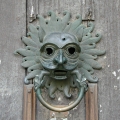 |
7. The last day in Durham we did "the
tour" -- the Priory, the Cathedral, and the Castle. It is a very
impressive collection of buildings. The sanctuary knocker, pictured here,
in the entrance to the Cathedral is not a face quickly forgotten. These
are grounds walked by Boyntons; in particular, Christopher Boynton was
a frequent visitor at the behest of the prince bishop. |
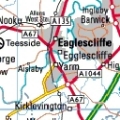 |
8. The dragon was slain at Croft on Tees. Joan retired from
Sedbury to Yarm. Acklam was closed. And we headed across the moor for
Whitby. Joan was the second wife of Christopher Boynton. Acklam was the
chief manor of Boyntons for centuries, and there is an effigy of the mother
of Henry and Christopher in the church there. |
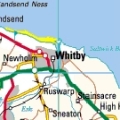 |
9. Robert de Boynton was a monk at Whitby Abbey. The monastery
was one of the oldest and richest in Yorkshire, and was built high on
a bluff overlooking the sea. The monastery and the sea made Whitby a tourist
attraction. Not many were interested in Robert and the 14th century controversy
at the abbey he was involved in, however. |
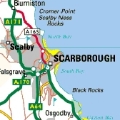 |
10. Scarborough had [and still has] a castle, and castles
attract opposing armies. Two Boyntons -- 300 years apart -- were parts
of military attacks against the castle. Snainton was land held by the
Boyntons from early in the 13th century. And Roxby was one of the major
land holdings of the Boynton-triangle Boyntons. |
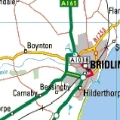 |
11. We were on the way from Whitby to York, but along the
way we stopped at Boynton places. Hunmanby was land held by the 14th century
Boyntons of Boynton. Boynton is, of course, the source of all Boyntons;
from the village the name was derived. Then a stop by Burton Agnes, the
home of Matthew and Francis Griffith Boynton. |
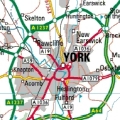 |
12. More about the fine food we were finding in England.
The first day in York we followed the route of the Corpus Christi pageant.
Agnes Scrope Boynton and Margaret del See Boynton were both members of
the Corpus Christi Guild and thus marched in the procession. |
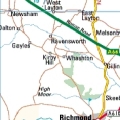 |
13. A drive through the northwest of Yorkshire took us to
a number of Boynton places. Ravensworth was home for Isabel and Castle
Bolton was home of Agnes. Gilling West was the home church of the Boyntons
and a number of memories remain there. Finally a sighting of Marrick Priory,
the recipient of Agnes' Pilgrimage of the Soul. |
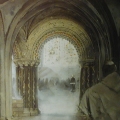 |
14. Off to see Philip Stell and extract Boynton references
from his data base. Then to the Chapter House of St. Mary's Abbey, which
was Walter's conference room. A stop to feed the pigeons. Then an investigation
of St. Leornard hospital -- once represented by lawyer Christopher Boynton. |
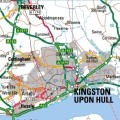 |
15. The Wickham-Boynton collection is in the archive at
the Hull University library. They have more Boynton documents than are
to be found anywhere else. They let us touch them, but they would not
let us take pictures. They had to do that themselves. Memories of Boyntons
of many centuries are to be found in this archive. |
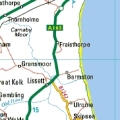 |
16. Barmston, Bridlington, and Watton -- this day of driving
along the east coast of Yorkshire. Barmston was a center for the Boynton
family after Robert married Margaret del See. Much earlier Walter and
his sons had actively participated in establishing the priory at Bridlington.
And Walter sent his two daughters to the new Watton priory. |
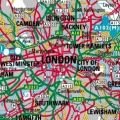 |
17. Research, research, research -- there are Boynton documents
at the Public Record Office, the British Library, and the Genealogical
Society. Those archives were the first item on the agenda for London.
Getting to them and finding places for eating, in addition to studying
documents, makes the story. |
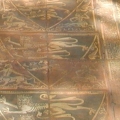 |
18. There are a few Boynton places in London in addition
to the archives. In the 14th century two Robert Boyntons served in parliament
as knights of the shire. They met in the Chapter House of Westminster
Abbey. The tiles under foot are a reminder that the king is in charge.
And Agnes must have been in the Tower of London after marrying Richard
Ratcliffe. |
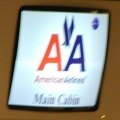 |
And home! |
